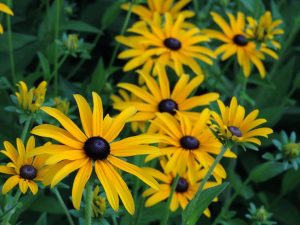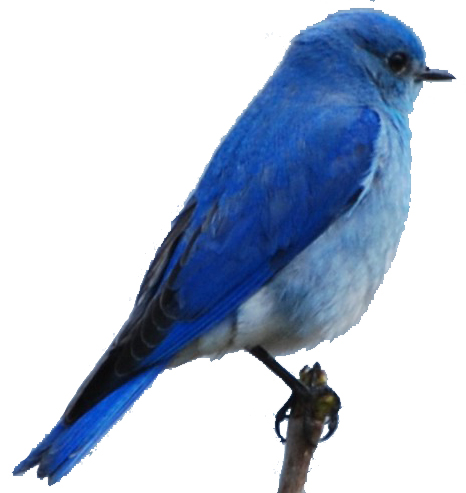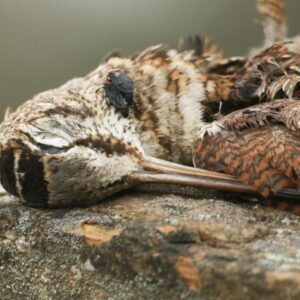Add Some Bird Friendly Plants to your Garden!
This blog was written by guest blogger Katherine Forster. As an urban biophilic entrepreneur, Katherine divides her time between promoting sustainable and ecological gardens to urban and suburban faith communities and sharing her joy of urban nature through her Wild. Here. online initiative.
Backyard birdwatching can be a fun pastime for both humans and cats. Planting native plants in your garden helps attract more local and migrating birds. Birds, as do most wildlife, need three things: food, water and shelter (both for safety and for nesting). Many larger trees and shrubs provide two of these three requirements: nourishment for birds in many forms, including nuts, berries, seeds and even insects (that are attracted to the tree pollen and nectar). They also provide important shelter, safely above ground away from most predators. Flowers and other plants can also provide some of these habitat needs and even with a small garden we can help out our feathered friends.
It’s important to choose plants that come from a neonicotinoid-free source – two good options are a local nature centre’s plant sale or an organic garden nursery.
When you’re choosing plants, consider adding a variety that bloom in different months – see if you can include a few for spring when birds are returning from their winter homes and some in autumn when birds are in need of extra nourishment stores for their long journeys south.
Native plants can also offer safe hiding spots and shelter – thorny plants and evergreens give birds a great location to safely hide from predators even in the winter.
When you’re looking at where to plant, keep in mind the same rule that should be applied to bird feeders: have them located closer than 0.9 metres to any window (so that any impact won’t be severe) or farther than 9.1 metres (so that they won’t accidentally hit the glass when flying away).
To read more about keeping birds safe at your feeders, including placement considerations for both window collisions and predation, see http://catsandbirds.ca/blog/keeping-birds-safe-at-your-feeders.
Here are five native plants to consider
CUP PLANT (Siliphium perfoliatum): These brilliant yellow flowers can grow up to 3 metres tall. They prefer sunny, moist areas and provide great shelter if grown in a large, tight bunch. They also provide water (which is held in their leaves) and seeds that are enjoyed by many birds.
BEEBALM (Monarda didyma): This summer flower, which does best in wet, partly-shaded areas of your garden, attracts hummingbirds and bees with its bright red colour. Allow the flowerhead to dry out on the plant and keep it up for the winter season in your garden when birds are looking for seeds.

Photo of Black-eyed Susans by Susanne Swayze.
BLACK-EYED SUSANS (Rudbeckia hirtadrought): This is an early summer yellow flower that provides seeds for birds and is another that can be allowed to dry up and left out for the winter. It’s a drought tolerant plant that is easy to grow in a sunny spot and reseeds itself. However, keep it watered and add some mulch (to help retain moisture) so that it can look its best.
VIRGINIA CREEPER VINE (Parthenocissus quinquefolia): This native vine provides shelter and late summer berries for various birds and can be used in small spaces where height offers the best growing option. Keep it in dry shade as this will slow it from spreading quickly into other parts of your garden. Do not allow it to attach with its aerial roots to wood siding or gutters.
WILD ROSE (SHRUB) (Rosa rugosa): This is a small shrub that grows up to 1.8 m tall in full sun and will offer shelter and nourishment to birds. It can also tolerate dry periods. Both the branches and stems are covered in small thorns and once it has flowered the pink blooms become rosehips which are eaten by songbirds.
When choosing other plants for your garden, consider other local native plants that can provide groundcover, berries or even soft nesting material (such as silky grass tassels) and fill out the entire gardening calendar with blooms of varying sizes and colours to benefit diverse insects, which in turn benefits birds. And remember that birds like messy areas where insects may hide: keep leaves on the ground for the winter, add some twigs and straw in a hidden corner and enjoy your birdwatching!

Want more nature news?Join our 80,000 nature lovers raising their voices for nature! |
Sources
Illinois Wildflowers
Gardening Know How
Fatal Light Awareness Program



